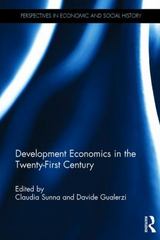Answer all questions.
(i) A fixed interest stock is redeemable at 106% in 15 years' time and pays interest at 9% pa payable half-yearly in arrears. Calculate the price an investor should pay to obtain a gross redemption yield of 9% pa. [2] (ii) Instead of purchasing the stock, the investor decides to agree a forward contract to buy the security in six years' time, immediately after the coupon payment then due. Calculate the forward price based on a risk-free rate of return of 6% pa effective and no arbitrage. The current price of the stock is that calculated in part (i). [3] (iii) Three years later, the price of the security is such that the gross redemption yield is still 9%. Calculate the value of the forward contract if the risk-free yield has not changed. [6] (iv) Calculate the yield obtained if the investor sold the forward contract after three years. [2] [Total 13]An investment analyst wishes to model the annual rate of growth / of an investment fund using a probability distribution of the form: (0.05 with probability 3k i= $0.075 with probability 1-4k 0.125 with probability k where & is a suitable constant. Determine the maximum and minimum values that can be obtained for the mean and standard deviation of / using this family of distributions. [5](iii) Explain whether the information in a typical company's financial statements is sufficiently reliable to provide the basis for an objective valuation of the company. [5] (iv) Explain why an unquoted company should be required to prepare financial statements. [5] [Total 20]You have been asked to advise on the distribution of the assets formerly owned by a recently deceased client. The client had owned all of the shares of a large but unquoted limited company, a large house and a substantial bank balance. His will had left everything to his two sons, to be shared equally "in a manner to be agreed by both". The sons have agreed that one will take the house and the other the company. They have agreed a valuation for the house, but cannot agree on the value to be attached to the shares. This valuation is important because it will affect the manner in which the bank balance will be split. The sons have provided you with the company's most recent financial statements. The son who will take the house has argued that the company should be valued by taking the profit according to the latest year's profit and loss account and multiplying it by the price/earnings ratio of a quoted company in a similar line of business. The son who will take the company feels that it would be more appropriate to value the company at the net assets figure according to the balance sheet. Both sons have provided figures based on their respective methods and these differ widely. (i) Explain the relevance of each of the two methods proposed by the sons to the valuation of this company. [8] (ii) Indicate, with reasons, which method is likely to give the higher figure. [2]










